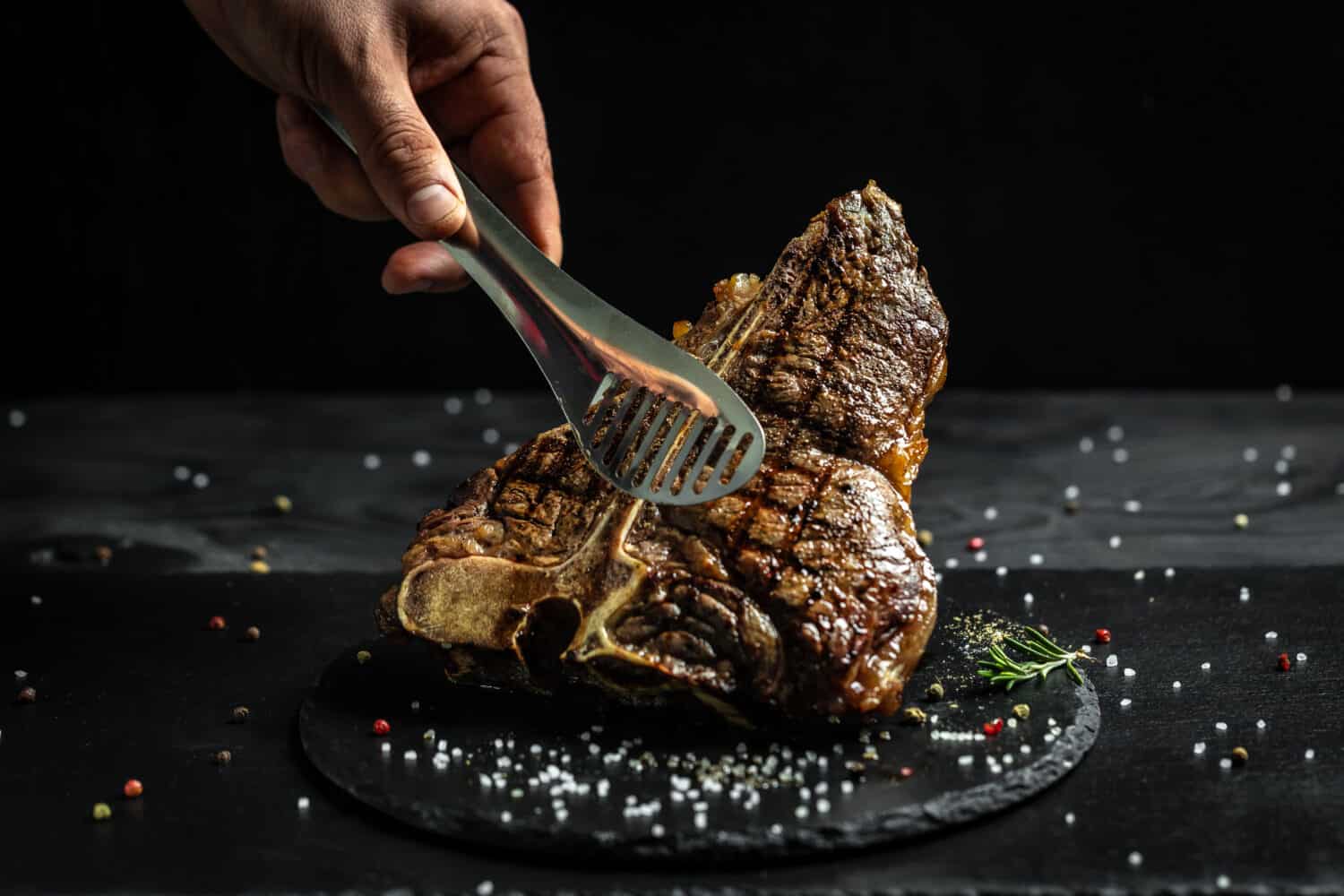When you go to a steakhouse and you're looking at the menu, there are several cuts that are generally offered. Two of the most popular steakhouses cuts are the porterhouse steak and the t-bone steak. Both of these cuts of meat are filling, a bit expensive, but delicious in all respects.
Steak lovers often order both on a menu when looking for a nice steak experience. Both porterhouse steaks and t-bone steaks are very popular with steakhouses and home chefs, but have differences in their look, taste, and overall consistency.
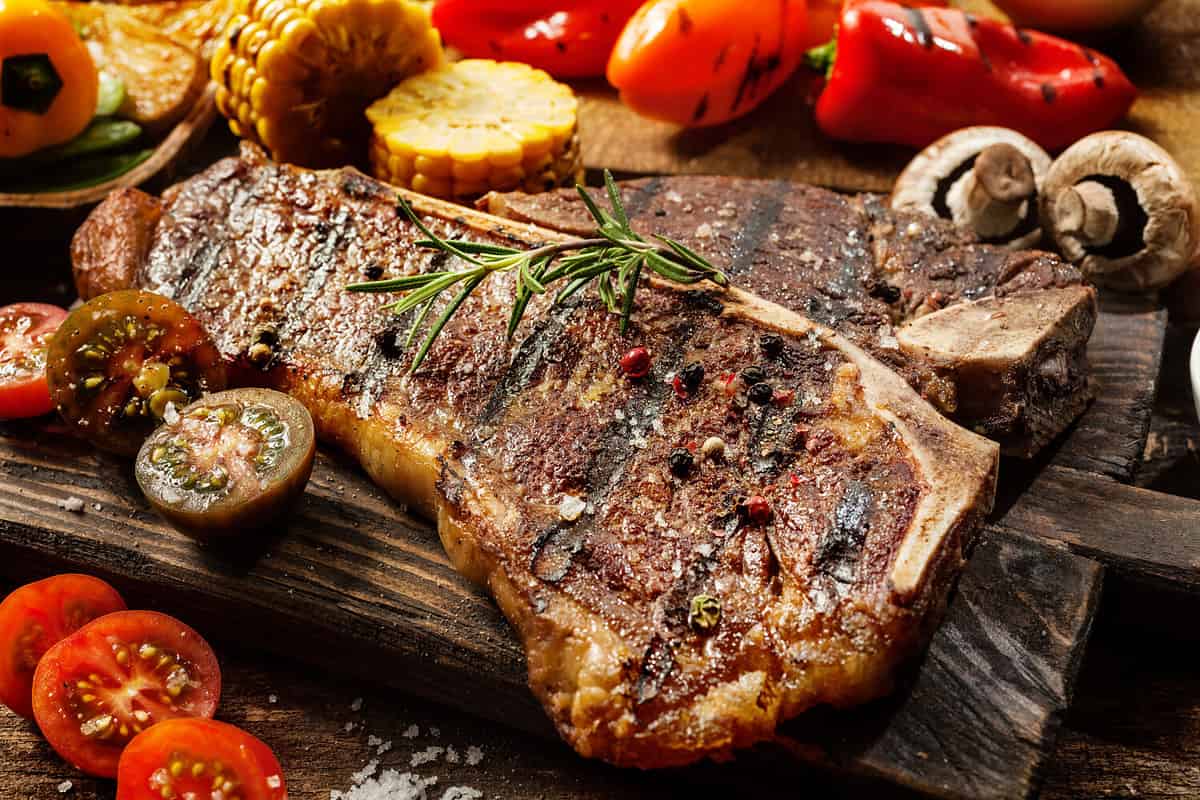
©stockcreations/Shutterstock.com
Porterhouse vs T-Bone: The Key Differences
The primary difference between porterhouse and T-bone steaks is their size. Porterhouses are required to be at least 1.25 inches thick at their widest point while T-bone steaks are thinner. Which is to say, the filet section of the porterhouse is generally larger.
Both steaks share similarities. They're both cut from the short loin of a cow and feature a “T” shaped bone with meat on each side. One side is a filet (tenderloin) while the other is a top loin (strip steak). Both porterhouses and t-bones are prized for their combination of textures and flavors with the tenderloin being tender while the strip steak portion is more robust.
What is a Porterhouse?
Porterhouse steaks come from the short loin section of the cow. It's an extremely large cut in comparison to other cuts of steak. It is a combination of two types of steaks, a tenderloin and a strip steak that is separated by a bone. The tenderloin is a very tender, soft piece of steak and smaller than the strip section. The strip section is extremely flavorful. For the steak to be a porterhouse steak, it has to have specific measurements and sizes.
What is a T-Bone?
A T-bone steak comes from the short loin section of the cow, much like a porterhouse steak. This is why the two are sometimes confused for each other. Like a porterhouse steak, it is two cuts of meat on one steak, separated by a bone. T-bone steaks are also made up of a tenderloin and a strip steak separated by the bone in the middle; hence its name.
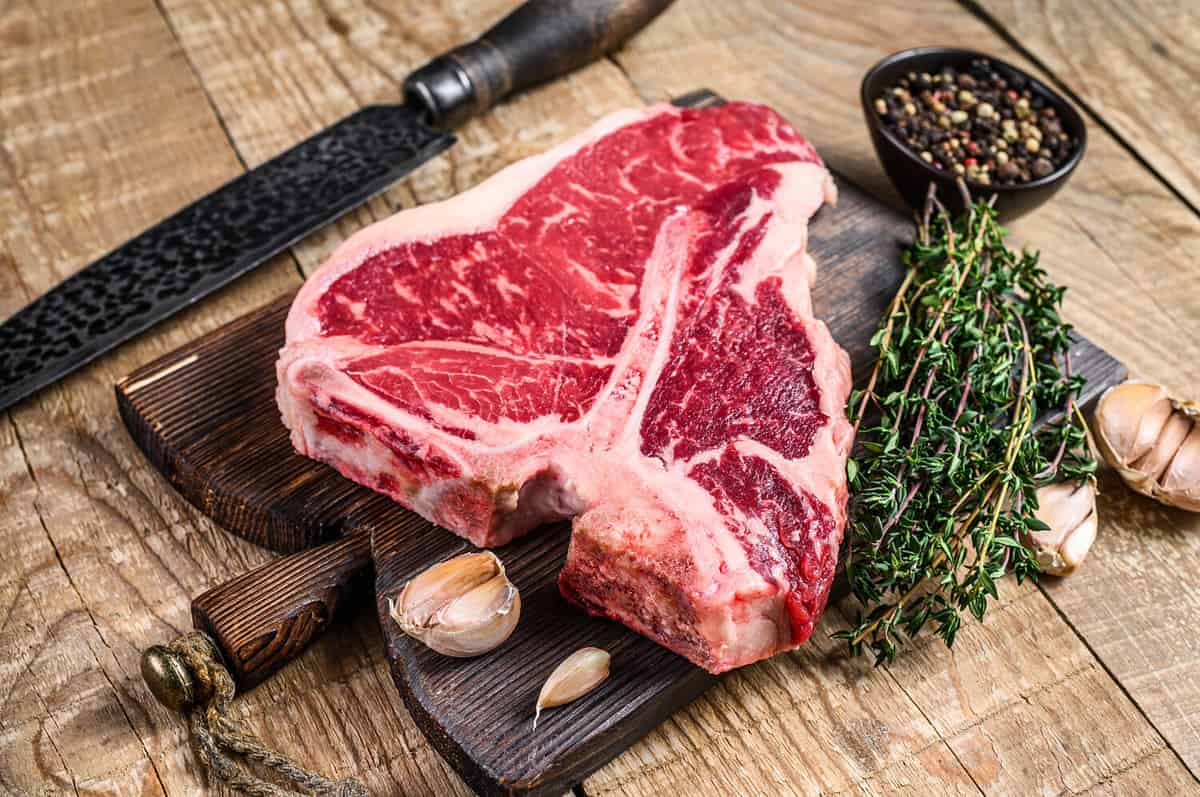
©Mironov Vladimir/Shutterstock.com
Size Differences
Sizes of steaks can vary depending on where you are ordering or purchasing the steak from. However, in order to tell the two steaks, a porterhouse and a T-bone, apart it comes down to the size of the tenderloin part of the steak. In order for the steak to be a T-bone steak, the steak's tenderloin should be 0.5 inches wide or more at its widest point. However, T-bones that reach 1.25 inches wide at their widest points reach the classification of becoming a porterhouse. This size specification was created by the USDA.
Prices Differences
Both porterhouse steaks and T-bone steaks are on the pricier side. Due to the strip and the tenderloin portion of the steaks, they tend to be expensive. Many steakhouses offer different sizes of each, such as a porterhouse for two. The bigger the steak, the more expensive. However, between a porterhouse and a T-bone, porterhouse steaks tend to be more expensive because of the size of the tenderloin. All in all, you get more meat on a porterhouse steak than a T-bone, hence the higher price.
Cooking Differences
The two steaks come from the same portion and section of the cow, therefore they cook relatively similarly. However, the porterhouse will take longer to cook because of the size of the filet. A larger steak ultimately takes a longer time to cook. Many like to use a cast iron skillet when cooking these cuts of meat, although a grill can work as well.
How to Choose
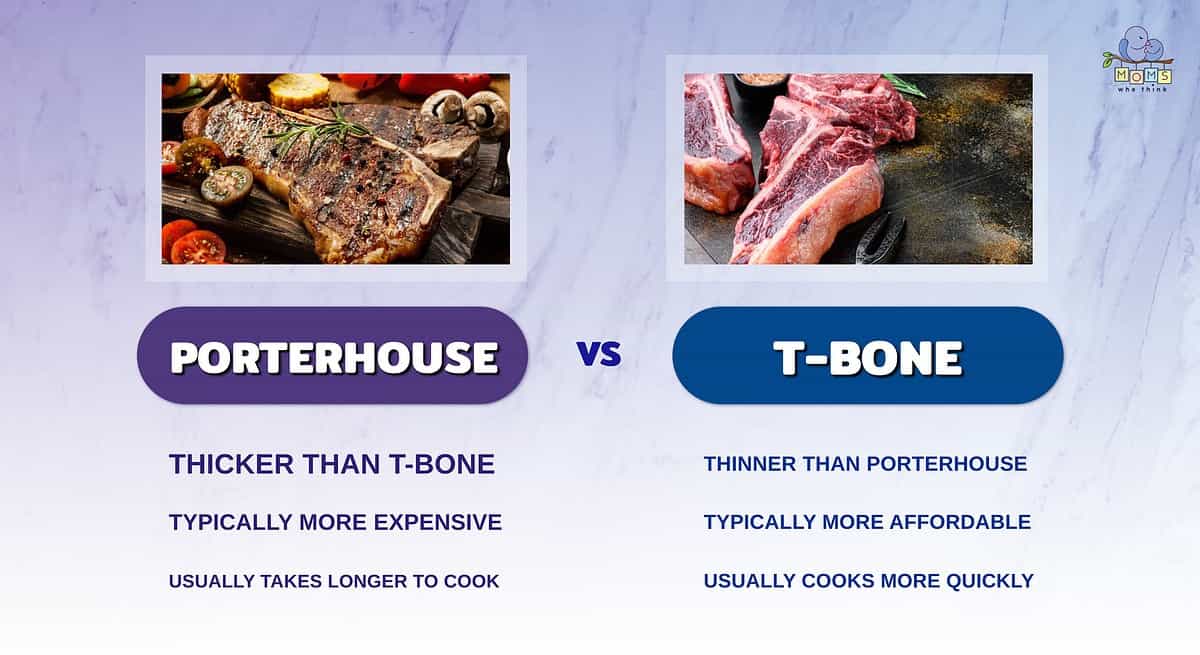
- The main difference between a porterhouse and T-bone steak is the thickness of the meat. A porterhouse is at least 1.25 inches thick at its thickest point.
- Because of the size differential, porterhouse steaks are typically more expensive. Both of these steaks are on the expensive side, however.
- In addition to raising the price, the size of a porterhouse makes it take longer to cook.
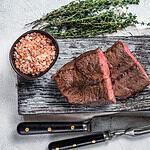
Mushroom Pepper Steak Recipe
- Yield: 4 1x
Ingredients
- 6 Tablespoons reduced sodium soy sauce, divided
- 1/8 Teaspoon pepper
- 1 pound beef top sirloin steak, cut into thin strips
- 1 Tablespoon cornstarch
- 1/2 cup reduced sodium beef broth
- 1 Garlic clove, minced
- 1/2 Teaspoon minced fresh ginger root
- 3 Teaspoons canola oil, divided
- 1 cup julienned sweet red pepper
- 1 cup julienned green pepper
- 2 cups sliced fresh mushrooms
- 2 Medium tomatoes, cut into wedges
- 6 Green onions, sliced
- 3 cups hot cooked long grain white rice
Instructions
- In a large resealable plastic bag, combine 3 Tablespoons soy sauce and pepper; add beef.
- Seal bag and turn to coat; refrigerate for 30 to 60 minutes.
- In a small bowl, combine the cornstarch, broth and remaining soy sauce until smooth; set aside.
- Drain and discard marinade from beef.
- In a large nonstick frying pan or wok, stir fry the garlic and ginger in 2 teaspoons oil for 1 minute.
- Add the beef; stir fry for 5 minutes or until no longer pink. Remove beef and keep warm.
- Stir fry the peppers in remaining oil for 1 minute.
- Add mushrooms; stir fry 2 minutes longer or until peppers are crisp tender.
- Stir broth mixture and add to vegetable mixture.
- Bring to a boil; cook and stir for 2 minutes or until thickened.
- Return beef to pan; add tomatoes and onions. Cook for 2 minutes or until heated through.
- Serve over hot cooked rice.
Nutrition
- Calories: 394
- Sodium: 841mg
- Fat: 10g
- Saturated Fat: 3g
- Carbohydrates: 46g
- Fiber: 3g
- Protein: 26g
- Cholesterol: 64mg
When choosing between a porterhouse and a T-bone steak, it all comes down to how much you want to spend, and how much you want to eat. A T-bone steak is a better choice if you want to keep the cost a bit lower and you also are not going to eat a huge meal. Porterhouse steaks are good to share with a partner, as they're much bigger, and also if you're celebrating because of the price point.
The image featured at the top of this post is ©sweet marshmallow/Shutterstock.com.
